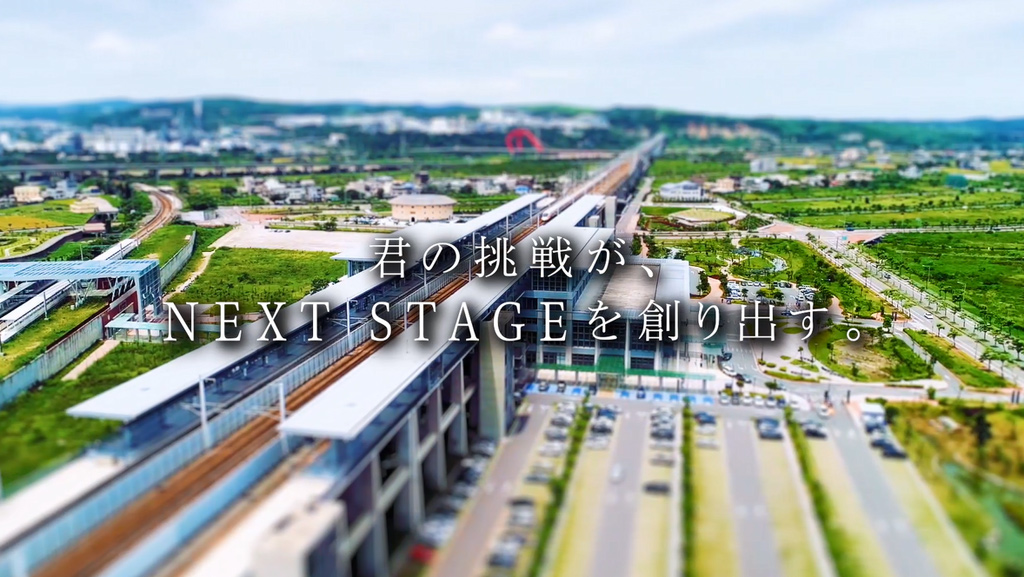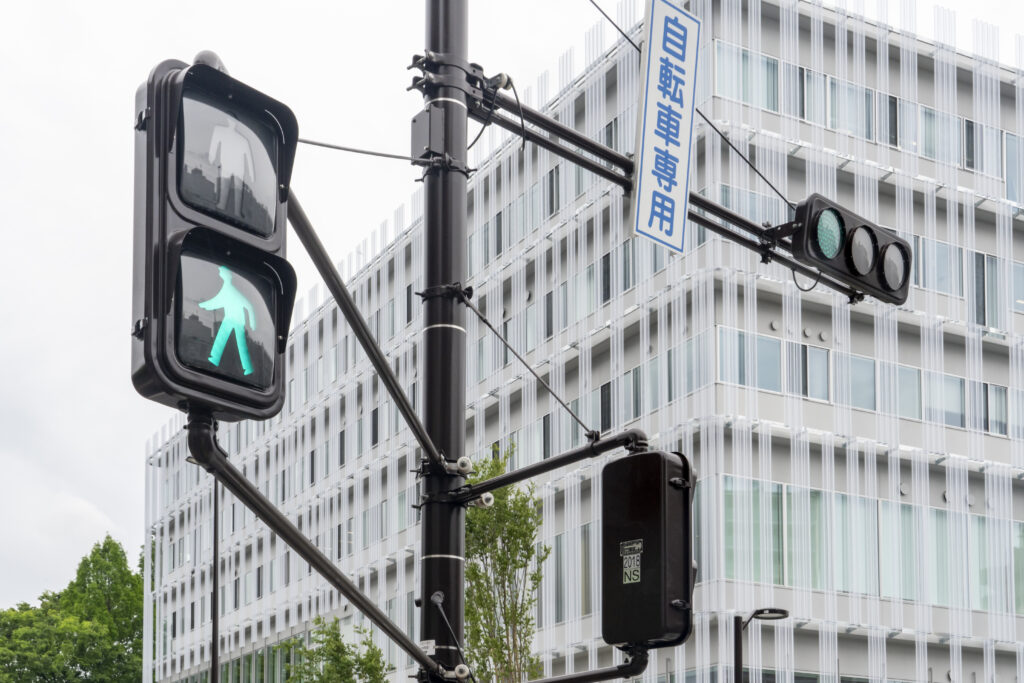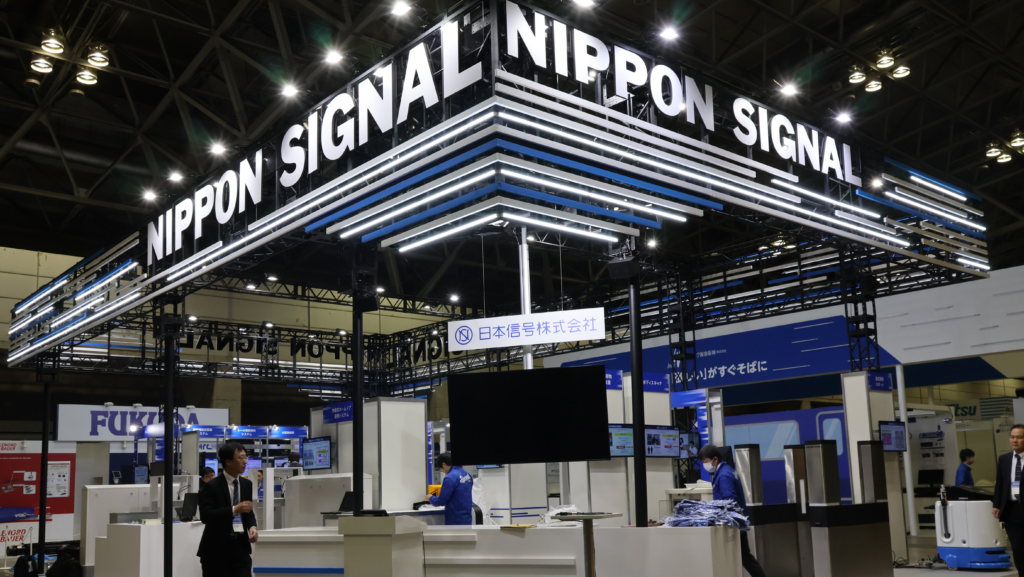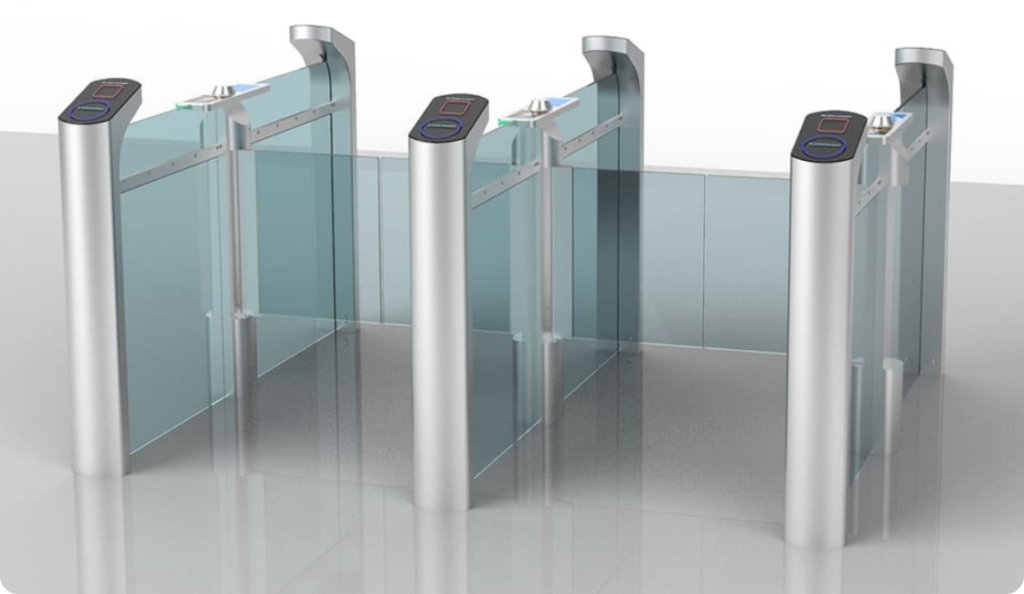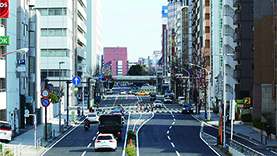3D距離画像センサ「アンフィニソレイユ」
What’s Laser ranging image sensor「Infini soleil」
- Products
- Specifications
- The theor of measurement.
- Laser scanning
- This system is not influenced by ambient light.
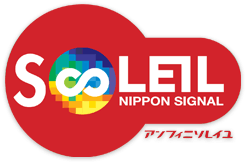
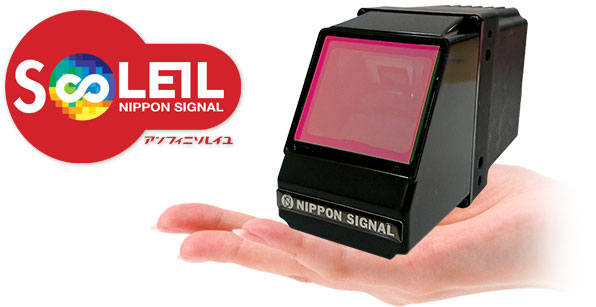
アクティブ方式(近赤外パルスレーザ使用)の為、昼夜を問わず使用することができるレーザセンサです。
レーザ送受信の光学系にMEMSスキャナ「ECOSCAN」を搭載することにより、耐外乱光200,000lx以上を実現しています。レーザを高速スキャンすることにより、安全性(クラス1)を確保し安定した距離値・光量値を座標毎に出力可能です。

![SOLEIL NIPPON SIGNAL [Infinisoleil]](https://www.signal.co.jp/wordpress/wp-content/themes/signal_2021/vbc/images_sp/spec/spec_01.jpg)
This sensor is usable at the noon and night owing to active method (using near infrared pulse laser).
The ambient lignt resistance is 200,000 lx and above, because MEMS-scanner “ECO SCAN” is included in optical system of laser emitting and receiving.
Laser safety standard of this sensor is class 1 because the laser is scanned fast. The stable value of range and light volume is output by coordinate.
スペック
Specifications
| InfiniSoleil FX10s | |||||
|---|---|---|---|---|---|
| 方式 | 光パルス飛行時間計測法 Time-of-flight | ||||
| 検出距離範囲 | 0m~15m | ||||
| 画角 | 水平60°×垂直50° | ||||
| 応答速度 | 16f/s | 10f/s | 4f/s | ||
| 測距点数 | 約53×33 | 約65×40 | 約100×60 | ||
| 角度分解能 | 20×27mrad | 16×23mrad | 11×15mrad | ||
| 距離精度(繰り返し精度) | ±130mm以下 @±3σ・拡散反射率12%・距離5m | ||||
| 耐外乱光 | 200,000lx(動作保証) | ||||
| レーザ安全性 | Class1(IEC60825-1:2001) | ||||
| 外形寸法/質量 | W62×H66×D120mm/550g以下 | ||||
| 動作温度 | -30℃~+60℃ 屋外対応 ※絶対湿度36g/㎥以下 | ||||
| 電源電圧 | DC+10.8V~+32V | ||||
| 消費電流 | 【DC+24Vのとき】 起動時:1A 定常時:約400mA(ヒータ稼働時) 定常時:約190mA(ヒータ停止時) |
||||
| 外部I/F | Ethernet(TCP/IP),CAN | ||||
| 付属品 | ●表示ソフト、コマンドライブラリー一式 ●LANケーブル、電源・CANケーブル、ACアダプタ ※内蔵の画像処理部を使用する場合、別売開発キット(SDK)が必要です。 |
||||
| 備考 | ●電源投入後、約35秒間はデータ出力が不安定です。 ●電源投入後、1.5時間以内は測距精度が不安定になる可能性があります。 |
||||
| InfiniSoleil FX10s | |||||
|---|---|---|---|---|---|
| Method | Time-of-flight | ||||
| Detecting range | 0m~15m | ||||
| Laser scanning area | Horisontally 60°×Vertically 50° | ||||
| Frame rate | 16f/s | 10f/s | 4f/s | ||
| Resolution | About 53×33 | About 65×40 | About 100×60 | ||
| Angular resolution | 20x27mrad | 16x23mrad | 11x15mrad | ||
| Ranging accuracy (Repeatabillity) | ~±150mm @±3σ with a reflection rate 12%, for diffusion objectsm at a distance of 5m(Ta:25℃) | ||||
| Ambient light resistance | 200,000lx (performance guarantee) | ||||
| Laser safety standard | Class1(IEC60825-1:2001) | ||||
| Dimensions / Weight | W50×H72.3×D126.5mm / About 0.6kg | ||||
| Operating temperature | -30℃~+60℃ Can be operated out door | ||||
| Supply voltage | DC+10.8V~+32V | ||||
| Current consumption | AV:0.33A / MAX:1.5A / @DC+12V | ||||
| External interface | Ethernet(TCP/IP),CAN | ||||
| Accessories | ●viewing software, set of command library ●LAN cable, power/CAN cable, AC adapter. *If you want to use the built-in image processing unit, you need an optional development kit(SDK). |
||||
測定原理
3D距離画像センサは投射したレーザがターゲットまで往復してくる時間から距離を計測(Time Of Flight)します。光は1ナノ秒(10億分の1秒)に30cm進みますので、センサとターゲットの間の距離が15cm(往復30cm)変化したときに、送受の時間差が1ナノ秒変化します。本センサでは、約30ピコ秒(1兆分の30秒)の最小単位で時間差を計測しています。(図1)
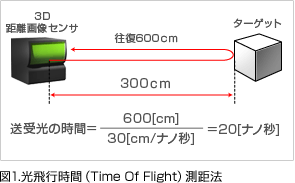
The theor of measurement.
This sensor measures the distance between the sensor and the target by checking the time for the emitted laser light to travel to and from the target (time of flight).
The light travels 30 cm in one nanosecond (one billionth of a second), so if the distance between the sensor and target changes by 15 cm (30 cm for a round trip), the difference of traveling time of light emitting and receiving changes by one nanosecond.
This sensor measures the time difference at the smallest unit of about 30 picoseconds (one trillionth of 30 seconds).(Fig. 1)

レーザ走査
2次元走査ミラー「ECO SCAN」は、このレーザ光を上下、左右にリサージュ走査し、各走査角における距離を計測していきます。「ECO SCAN」は共振駆動することにより、少ない電力で大きな走査角を得ることができます。 水平方向と垂直方向では共振周波数が異なりますので、組み合わせると図2のような軌跡を描きます。左下を走査の原点としたときのt秒後に到達する座標を計算で求めることができます。 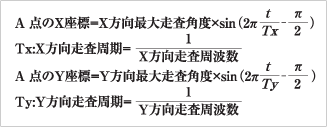
そして、XとYの走査周期の組み合わせから決まる周期後に、ふたたび原点に戻ってきます。あらかじめレーザを投射すべき座標と時刻を求めたテーブルを用意し、最適な時刻にレーザ投射・計測することで、各座標(走査角度)の距離を計測、距離画像を取得しています。 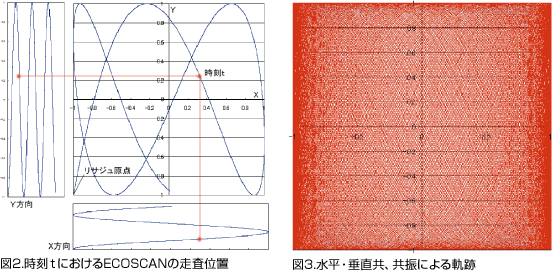
Laser scanning
The 2D scanning mirror (EcoScan) scans the laser beam by the way of Lissajous scanning up and down and right to left, and measures the distance at each scanning angle. EcoScan can obtain a large scanning angle with small amount of electric power utilizing resonance driving. In the case of this sensor, both horizontal and vertical scanning is made in the range near to the resonance frequency. The resonance frequency of vertical direction differs from that of horizontal direction, so if the both are combined, the frequency locus will be as shown by Fig.2. When the lower left is the origin of scanning, the coordinate to which the light reaches after t seconds can be calculated as follows. 
And it returns to the origin after the cycle which is determined by the combination of X and Y scanning cycle. A table with which the coordinates and times to emit the laser beam can be obtained is to be prepared beforehand, and by emitting the laser bean at the best timing and measuring the distance, the distance of each coordinate (scanning angle) can be measured and the distance and image can be obtained. 
なぜ外乱光に強いのか?
当社3D距離画像センサで採用している測距方式は、レーザ光を投射して、ターゲットで散乱した光をフォトダイオードで捉え、その時間差から測距を行う光飛行時間測距法です。 ここで使用しているフォトダイオードは非常に高感度であり、強い外乱光を受けるとノイズを発生します。測距を行うためには、このノイズレベル(N)よりも、受光する散乱光レベル(S)の方が大きいことが必要です。
そこで、当社では光学系方式に「同軸光学系方式」を採用しました。その他に「分離光学系方式」「CCD/CMOSイメージセンサ方式」等があります。 「ECO SCAN」ミラーにより、レーザ光を投射する方向と、フォトダイオードの視野を1測点ずつに集中させる「同軸光学系方式」の採用により 、高い散乱光レベル(S)の受信と、最小限のノイズレベル(N)に抑えることができ、太陽光下でも測距できます。(図4)
投光と受光にそれぞれ光学系を持つ「分離光学系方式」は、広い走査領域の視野が必要であり、多くの外乱光をフォトダイオードに集めてしまうため、ノイズレベル(N)が増えます。(図5)
また、測距機能を持つ「CCD/CMOSイメージセンサ方式」は、フォトダイオード1画素当たりの視野は狭くノイズレベル(N)は抑えられますが、広い領域へ同時にLED光を投射するため、1測点あたりの投射光量が少なく、十分な散乱光レベル(S)を得ることができません。(図6)
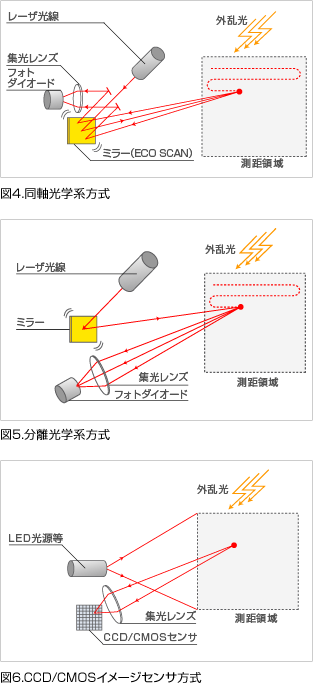
こちらは、当社3D距離画像センサを使用して太陽光下で計測を行った動画です。
This system is not influenced by ambient light.
The ranging method used in our Laser ranging / image sensor is flight time ranging, which obtains the distance to the target measuring the traveling time of the emitting laser light from the sensor to the target and the scattered light received by photo sensor back from the target.
The photo sensor used in this Laser ranging / image sensor has an extremely high sensitivity. If it receives strong ambient light, noise will be generated. For ranging, the level of receiving scattering light (S) must be higher than the noise level (N).
Therefore we adopted the method of coaxial optical system. There are other methods like the method of separated optical system or the method of CCD/CMOS image sensor and so on. In the case of the method of coaxial optical system, with Eco Scan the direction of laser beam projection and the field of view of the photodiode can be concentrated on each measuring point respectively, thus it is possible to have the signal reception under very high level scattering light (S) and to keep the noise level (N) minimized, and this makes it possible to range the distance under the sunlight. (Fig. 4)
In the case of separated optical system sensor which has two independent optical systems for each light emitting and receiving, a filed of view to cover a wide scanning area is required, and so a large volume of ambient light comes to the photo sensor, and consequently the noise level(N) will be increased. (Fig. 5)
And in the case of method which uses an image sensor with ranging capability, [CCD/CMOS image sensor method] the field of view per one pixel of photo diode is narrow, and the noise level (N) can be lower, however due to wide-area laser light emitting at a time, the irradiated light volume per one measuring point becomes smaller, and it is impossible to obtain a high enough scattering t light level(S). (Fig. 6)

This is a moving image which was sensed by our laser ranging/image sensor under sunlight.



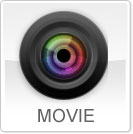

![What's Laser ranging image sensor [ Pixel Soleil ]](https://www.signal.co.jp/wordpress/wp-content/themes/signal_2021/vbc/images_en_sp/sensor/btn_next.gif)
